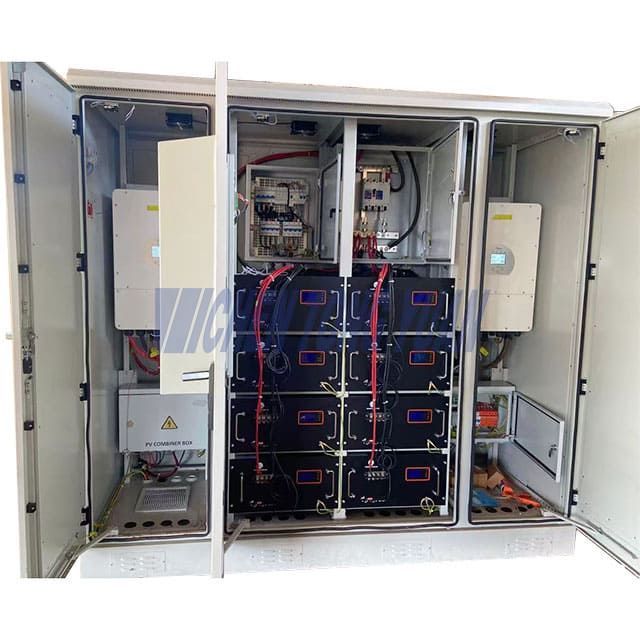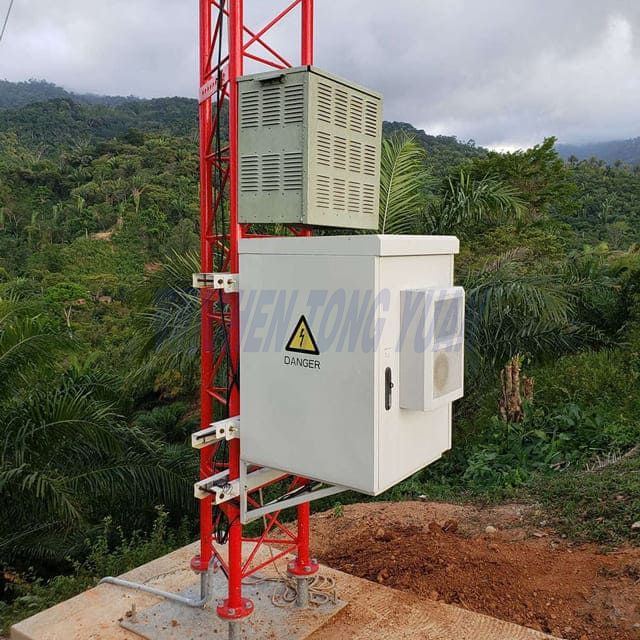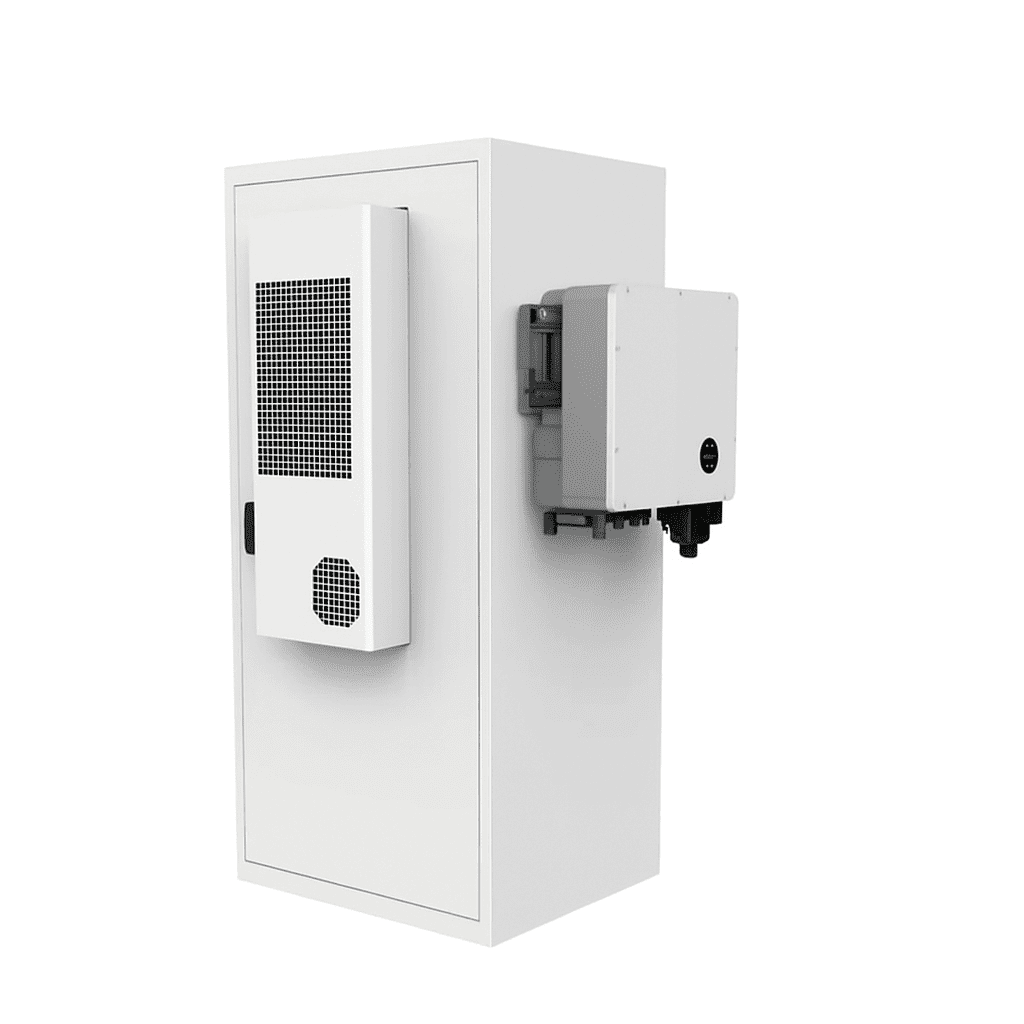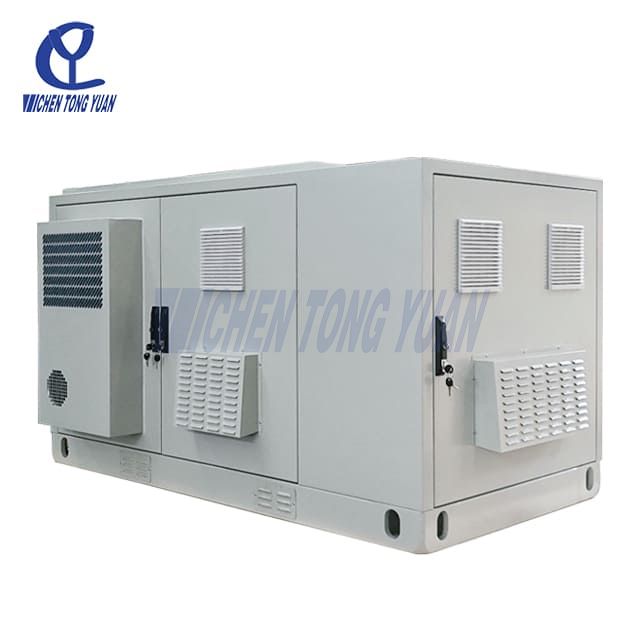1. Introduction
With the global push for clean energy, solar power is leading the charge—but reliable energy storage is essential for consistent operation. Outdoor solar battery cabinets are the natural next step: robust, weatherproof enclosures for solar batteries installed outdoors. These cabinets protect, regulate, and secure storage systems in even the harshest environments.
They’re the unsung heroes behind telecom towers, smart city infrastructure, off-grid facilities, and emergency power systems. In this guide, we analyze their advantages, types, usage, and include product highlights like Cytech’s advanced line.
2. What is an Outdoor Solar Battery Cabinet?
An outdoor solar battery cabinet also called solar battery enclosure outdoor is a weatherproof enclosure designed to house and manage batteries in solar-powered systems. Built with materials like powder-coated steel, stainless steel, or aluminum, they resist corrosion, UV, moisture, and dust. Inside, you’ll find:
Battery racks (for lithium, lead-acid, or gel batteries)
Ventilation systems (passive fans or vents)
Thermal management (fans, air conditioner,heat exchanger or integration with a BMS)
Access features (secure doors, locks, cable glands)
Control modules (circuit breakers, fuses, surge protection)
These components collectively regulate temperature, prevent moisture ingress, and secure the system against unauthorized access.
3. Advantages of Outdoor Solar Battery Cabinets
3.1 Improved Performance & Efficiency
Regulated environments prolong battery cycles and reduce losses due to heat stress or undercharging.
3.2 Enhanced Safety
Cabinets rated IP65 or NEMA 3R/4 feature flame-retardant linings, explosion vents, and sealed compartments to minimize fire and electrical hazards.
3.3 Environmental Sustainability
Coupled with renewable systems, they help decrease carbon emissions. When paired with recyclable chemistries like LiFePO4, they support circular economy goals.
3.4 Modular Installation & Scalability
Modular designs and rack systems make scaling easy—ideal for projects that grow over time.
3.5 Durability in Extreme Climates
Engineered for full spectrum weather—from deserts to polar zones—with protective coatings and built-in insulation.
3.6 Cost-effective Maintenance
Low maintenance thanks to weatherproofing; remote monitoring further reduces physical checkups.
4. Applications of Outdoor Solar Battery Cabinets
| Application Area | Description |
| Telecom Base Stations | Enables grid-free, 24/7 operation in remote towers |
| Smart City Infrastructure | Powers traffic lights, cameras, flood sensors in urban settings |
| Off‑Grid Communities | Delivers reliable power for rural areas, clinics, schools |
| Security Systems | Provides continuous power to CCTV and access-control sites |
| Emergency & Mobile Units | Powers disaster-response trailers, remote field labs, and event setups |
These cabinets excel in environments where continuous, autonomous power is mission-critical.
5. Types of Outdoor Solar Battery Cabinets
Based on Battery Chemistry
Lead‑Acid Systems
Lead‑acid cabinets remain a cost‑effective choice for off‑grid solar installations. Though heavier than newer chemistries, their robust construction and well‑understood performance profile make them suitable for large‑format stationary arrays. Proper ventilation within the enclosure is essential to mitigate hydrogen off‑gassing and ensure safe operation.
Gel‑Electrolyte Designs
Gel‑electrolyte batteries utilize a silica‑thickened electrolyte, creating a spill‑proof system ideal for remote or unmanned sites. The maintenance‑free chemistry resists stratification, delivering stable charge acceptance and extended calendar life even under fluctuating partial‑state‑of‑charge conditions. Their sealed enclosures significantly reduce environmental risks.
Lithium‑Ion Modules
Lithium‑ion cabinets offer the highest energy density per cubic foot, supporting lighter, more compact outdoor enclosures. Advanced battery management systems (BMS) deliver precise cell balancing, temperature monitoring, and rapid charge/discharge control. Although their upfront cost is higher, the extended cycle life (up to 6,000 cycles at 80% DOD) and minimal maintenance requirements drive down total cost of ownership.
Based on Installation
Ground‑Mounted Installations
Designed for utility‑scale and commercial solar farms, ground‑mounted cabinets can accommodate large‑format racks of batteries alongside integrated inverters and charge controllers. Their reinforced steel or aluminum housings often include seismic anchoring provisions, flood‑rated bases, and roof‑mounted HVAC units to maintain optimal operating temperatures in varied climates.
Wall/Pole‑Mounted Solutions
Urban or roadway‑sidepoint systems benefit from slim‑profile, wall‑ or pole‑mounted solar battery cabinets. These compact enclosures combine a sleek aesthetic with rugged ingress protection (typically IP65 or higher) and are often rated for wind speeds up to 150 mph. Conduit knockouts, integrated cable trays, and tamper‑resistant latches simplify field installation.
Modular/Hybrid Units
Hybrid cabinets integrate batteries, MPPT solar charge controllers, string inverters, and optional backup generators into a single plug‑and‑play enclosure. Ideal for mobile applications—such as telecom towers, remote mining camps, or disaster‑relief logistics—the modular design allows rapid on‑site scaling. Slide‑in battery trays and hot‑swappable electronics facilitate maintenance without system downtime.

Ground-mounted cabinet

Wall/pole-mounted cabinet

Modular/hybrid units
6. How to Use Outdoor Solar Battery Cabinets Effectively
6.1 Site & System Preparation
Select well-drained, shaded or ventilated sites. Ensure enough space and proper grounding.
6.2 Correct Sizing
Match cabinet capacity to daily load, days of autonomy, and peak current draw. Consider voltage, current, and BMS compatibility.
6.3 Installation Best Practices
Use UV-rated cable glands
Anchor securely to resist wind or vibration
Include BMS near batteries, ideally rack-mounted
6.4 Ongoing Maintenance
Inspect seals, vents, and fans
Clean internals and check thermal control
Log battery cycles and monitor cell balance
7. Choosing the Right Outdoor Solar Battery Cabinet
Evaluate on these key factors:
Environmental ratings: Look for IP65/IP66 or NEMA 3R/4X
Material Build: Prefer stainless steel or powder-coated steel
Thermal solutions: Passive vs. active cooling/heating based on climate
Security: Tamper-proof locks, alarm support, and optional GPS
Scalability: Space for future battery upgrades
8. Outdoor Battery Cabinets vs. Indoor Battery Rooms
| Feature | Outdoor Cabinet | Traditional Indoor Storage |
| Location | Weatherproof exterior installations | Indoor space with HVAC required |
| Weather resistance | Built to withstand all conditions | Dependent on climate control |
| Security | Tamper-resistant with locks/alarms | Interior security needed |
| Cooling system | Built-in active or passive cooling | Requires HVAC integration |
| Mobility & Flexibility | Ideal for remote/off-grid systems | Fixed, limited by building |
Outdoor cabinets are essential when flexibility, durability, and outdoor deployment matter.
9. Maintenance & Management Best Practices
Inspect quarterly for corrosion, dust, pests
Log thermal data from BMS
Keep firmware updated if IoT-enabled
Prepare batteries for replacement before end-of-life
Winter-level protection like heaters or insulation, if needed
10. Trends & Innovation in the Space
Modular, plug-and-play systems enabling hot-swappable battery packs
Smart IoT integration with mobile alerts and predictive failure analytics
Eco-conscious materials, recyclable metals, low-VOC paints
Hybrid cabinets that integrate inverter and MPPT systems in a single unit
11. Featuring Cytech: Advanced Enclosures and Smart Solutions
As a leader in outdoor energy storage, Cytech offers IP65/NEMA 4/NEMA4X-rated outdoor lithium battery cabinets that feature:
Their systems enable users to ensure constant operation in even the most demanding environments.


12. Why Industry Professionals Choose Cytech
Cytech stands out for:
Intelligent Battery Management (iBMS) with data logging and remote access
Support for multiple chemistries, making it easy to evolve with technological advances
Seamless integration with SCADA or cloud-based monitoring systems
Fast deployment thanks to modular design—cold-start rentals, hybrid microgrids, and more
Energy professionals trust Cytech for its forward-thinking, secure, and high-performance battery solutions.
13. Common Issues & Troubleshooting
Overheating: Upgrade ventilation; add thermal sensors and alarms
Corrosion: Regularly re-seal and treat rust-prone areas; use desiccants
Battery lifespan dips: Implement BMS-led charging protocols
Tampering: Add GPS trackers, cameras, motion lighting
Preventive maintenance is key to avoiding costly system failures.
14. Regulatory Standards & Compliance
IEC 61427 & 62257 – for renewable battery systems
IP/NEMA rating ensures resistance to dust, water, and spray
UL 9540 / 1973, NFPA 855 – Fire and electrical safety compliance
EMC/EMI regulations for signal-sensitive installations
Documentation: Proper labeling, logs, and inspection records
15. Case Studies
Emergency Telecom in Kenya
Dubai Smart Signals
Californian Wildfire Relief Trailers
Conclusion
Outdoor solar battery cabinets or outdoor solar battery enclosures are integral to modern, decentralized energy systems. By combining durability, security, and smart features—especially when leveraging solutions like Cytech’s—organizations unlock reliable, efficient, and scalable energy. As the world gravitates toward renewable grids and off-grid deployments, these cabinets are vital for ensuring clean, uninterrupted power everywhere.
FAQs
1. What is the expected lifespan of a solar battery cabinet?
Cabinets typically last 10–20 years; batteries may need replacement every 5–10 years.
2. Can I DIY-install one?
Possible for small setups, but expert installation is recommended for large or regulated systems.
3. Are lithium cabinets safe outdoors?
Yes—when installed in IP-rated, ventilated enclosures with BMS.
4. How to prevent theft or vandalism?
Use tamper locks, motion lighting, GPS, or camera systems around the cabinet area.
5. What’s the typical cost?
Prices vary—$500 for compact residential units, to $5 000+ for industrial-grade, feature-rich cabinets.
















